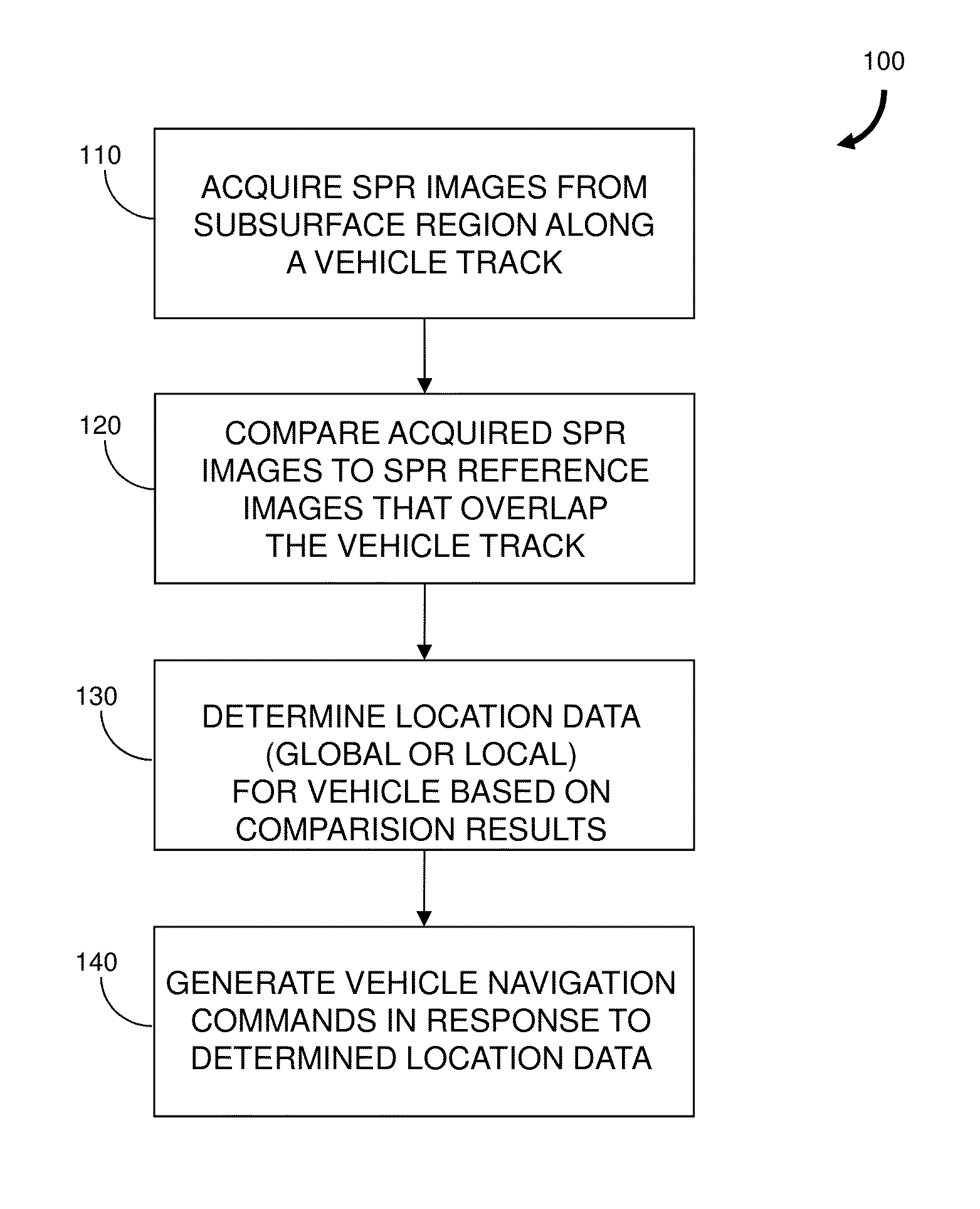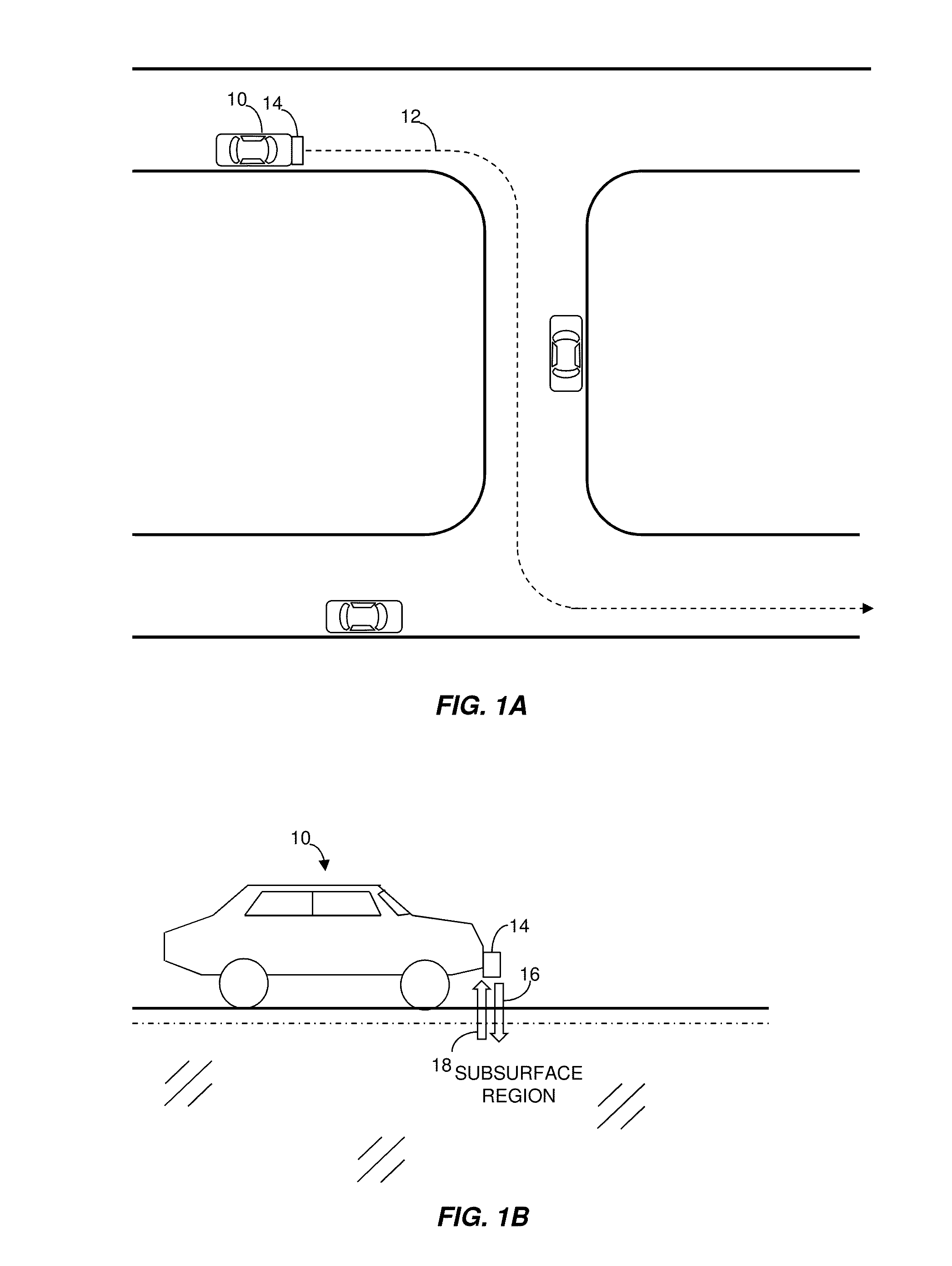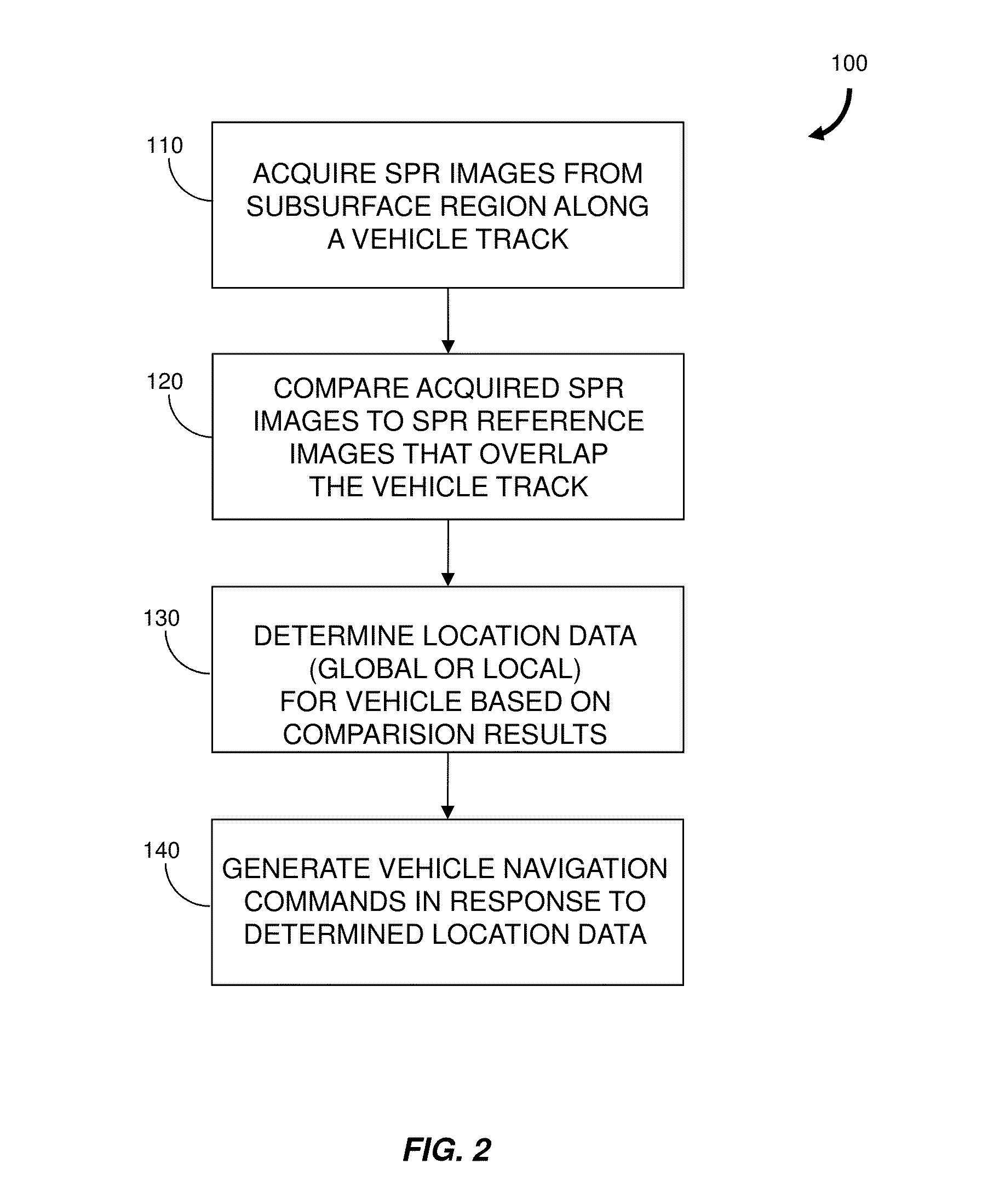Vehicle localization using surface penetrating radar
a surface penetrating radar and vehicle technology, applied in the direction of using reradiation, navigation instruments, instruments, etc., can solve the problems of gps alone not providing the precision necessary to stay within the traffic lane, presenting a challenging approach, and severely degrading gps accuracy
- Summary
- Abstract
- Description
- Claims
- Application Information
AI Technical Summary
Benefits of technology
Problems solved by technology
Method used
Image
Examples
Embodiment Construction
[0026]Reference is made in various embodiments described below to ground and to an underground region below the surface of the ground. It will be understood that the ground includes soil, road surface or pavement such as asphalt and concrete layers, gravel, sand and the like, and that the surface of the ground is the interface of the ground with the air, array, fluid or free space. In some instances, the surface may also include the surfaces that surround a tunnel, mineshaft and other passageways through which a vehicle may travel.
[0027]More generally, reference is made herein to surface penetrating radar (SPR) and ground penetrating radar (GPR). As used herein, SPR means any radar system that is configured to acquired data from a subsurface region. A SPR can be configured and oriented to obtain data for a subsurface region that is behind the surface of a wall, ceiling, floor or the surface surrounding a tunnel or passageway. In some instances the SPR can also obtain data for the su...
PUM
 Login to View More
Login to View More Abstract
Description
Claims
Application Information
 Login to View More
Login to View More - R&D
- Intellectual Property
- Life Sciences
- Materials
- Tech Scout
- Unparalleled Data Quality
- Higher Quality Content
- 60% Fewer Hallucinations
Browse by: Latest US Patents, China's latest patents, Technical Efficacy Thesaurus, Application Domain, Technology Topic, Popular Technical Reports.
© 2025 PatSnap. All rights reserved.Legal|Privacy policy|Modern Slavery Act Transparency Statement|Sitemap|About US| Contact US: help@patsnap.com



